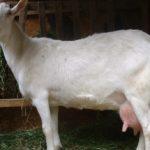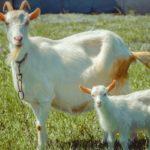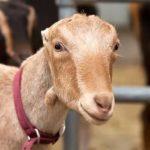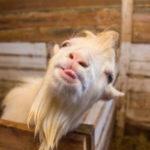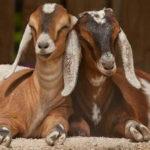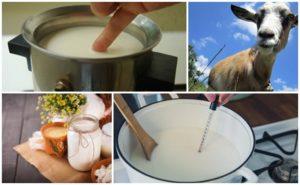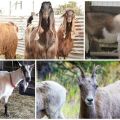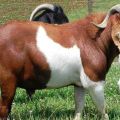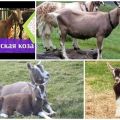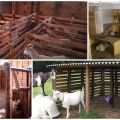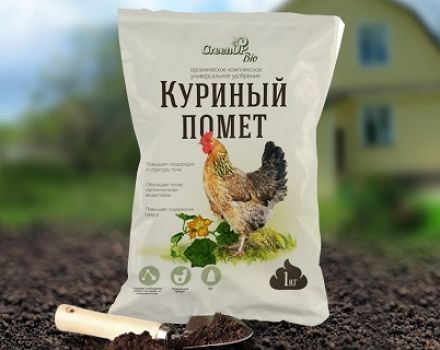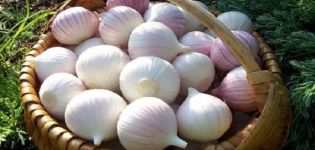Purpose of earrings on the neck of a goat and what breeds have them
Goats are one of the oldest domesticated animals. There are more than 200 breeds in modern animal husbandry. Pedigree goats differ not only in their productive orientation, but also in external characteristics, for example, some of them have earrings, while others do not. Consider the purpose of earrings in goats, for which breeds they are characteristic.
What are goat earrings on the neck?
The so-called earrings are fleshy outgrowths covered with wool, which in goats are located under the lower jaw. They do not perform any function and, most likely, have no practical value. Although it is believed that the earrings originated as a protective device - if a predator grabs a goat by the throat, there is a chance that the earrings will come off and the animal will run away.
However, in all likelihood, this is the result of a mutation that once arose, which was entrenched among the representatives of the species. Not all goats have earrings, not all purebred animals inherit them, even if they are characteristic of the breed.
Sorted by characteristics
Goats with earrings can be found among breeds bred by domestic or foreign breeders, in any direction - dairy, meat, down, woolen; in horned and hornless, as well as in miniature, they are present. That is, we can say that the earrings are characteristic of the biological species as a whole.
Dairy goat breeds with earrings
Russian white goats have earrings. Animals with white hair, universal purpose - give milk, meat, down, thin skin. Females are fertile - they can bring 3-4 kids in each lamb.

The necks of the famous Saanen goats are also decorated with earrings. The animals are large, white, hornless, with fine hair and graceful constitution. They are distinguished by long lactation, give a record amount of milk with excellent taste. Alpine breed, which also has high milk yield and almost continuous lactation. The goats are fertile and are capable of producing 4 kids at each birth. Withstands harsh climatic conditions.
Meat goats
The black Anatolian breed is also bred in Russia. In addition to earrings, animals have a beard, thick and long hair. They can be kept even in Siberia, they are not afraid of cold and wind. In addition to meat, you can get fluff and wool from them, although not in the same amount as from varieties of a special orientation. Little kids are born a little, usually 1, sometimes 2.
The Boer meat goat is a large animal, dense in constitution, white, with a brown head and upper neck, small horns and drooping ears. They are distinguished by good health, vitality, they can give 3 offspring in 2 years.
Downy
The Orenburg breed is a leader in the production of thin, soft, elastic down. Color - black and white. Individuals are fertile - there is always not one, but several babies in the lamb.
The black downy goat produces thin, long, non-shiny down. Animals are medium-sized, black, thin-legged and long-eared.
Kashmiri goats with earrings are white or gray, white fluff is more valuable in production. It is very light and does not cause allergies even in children. The animals are large, body length - 1.5 m. Kashmiri queens give birth to only 1 kid.

Woolen goats with earrings
Representatives of the Angora breed have a small body size and weight, but animals are valued for their excellent wool, strong and shiny. Most of the animals are white, but there are gray, black and silver colors. Harvesting of wool can be carried out more often than usual - 2 times a season, as it grows quickly. Give 1 kid. In breeding work, Angora is used to improve the characteristics of other breed varieties.
Soviet breed - animals of white color, the coat is strong and shiny. Animals are slightly larger than Angora, mobile, quickly adapt to conditions of detention, but not too fertile.

Hornless breeds
In addition to the Saanen goats, this group includes the related Toggenburg goats. In terms of productivity and fertility, the breed is similar to the Zaanen, but differs in the color of the coat - light brown with white areas. They are used to improve breeds.
The La Mancha breed also has earrings. Animals are strong, dairy, color - white, brown and black. Milk is not spoiled by an unpleasant odor, medium fat. There are at least 2-3 cubs in lambing (maximum 5).
The Nubian goat, although thermophilic, is distinguished by unpretentiousness to food, eats little. They differ in multiplicity, they can bring 2 lambing per season. Milk content - up to 1 thousand liters per lactation, odorless milk, its fat content - up to 6%.
Dwarf representatives
Cameroon goats with earrings are undemanding to conditions of keeping and feeding, they love warmth, but cannot tolerate moisture. Average weight - 30 kg, height at the withers - 50 cm. Color - from white to brown and black. You can get both meat and milk from them. In the litter, they give 2 kids.
The Nigerian breed is similar to the Cameroonian breed. Animals can be attributed to the dairy type, from them you can get 1-1.5 liters of milk per day. Lactation lasts 305 days. The color of the coat is red, white, black. The animals are clean and playful, they can even be trained and kept like a pet. They are outgoing and friendly. Up to 3 kids are born in the offspring.
Earrings in goats are a fickle sign. They can be inherited from either parent, but not always to all descendants of the same goat or goat. They are also not a breed trait, they are not considered a defining characteristic for any breed (the presence or absence of earrings does not indicate purebredness or, conversely, the local origin of the animal).

